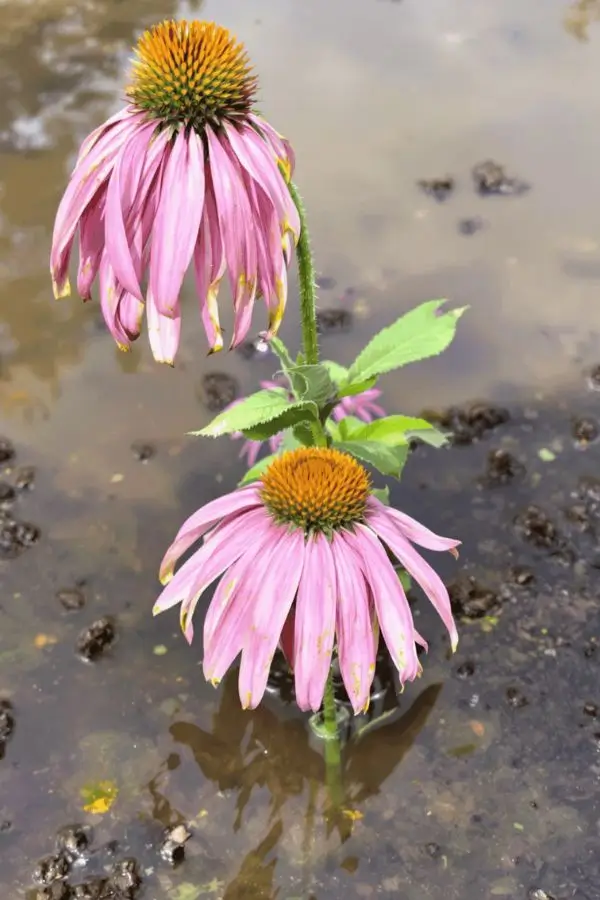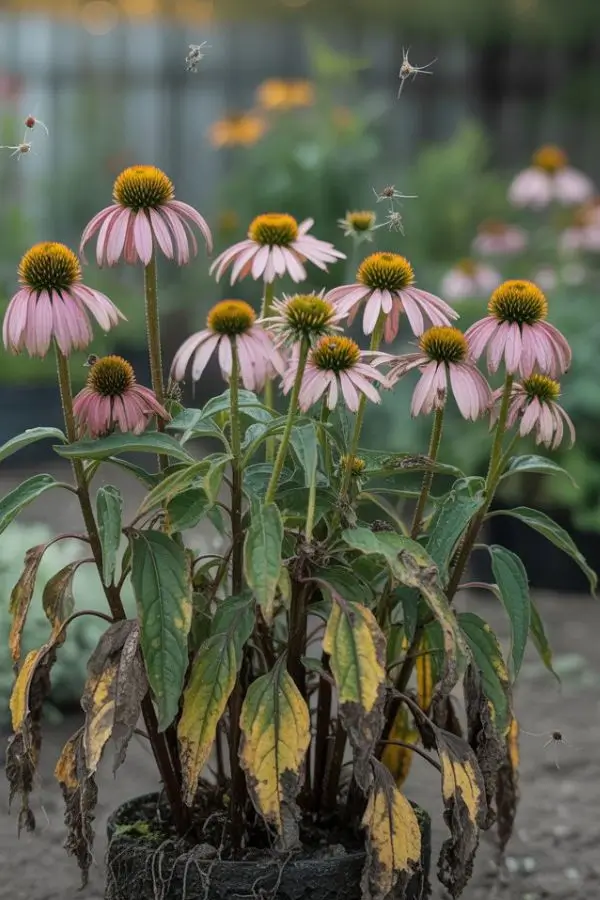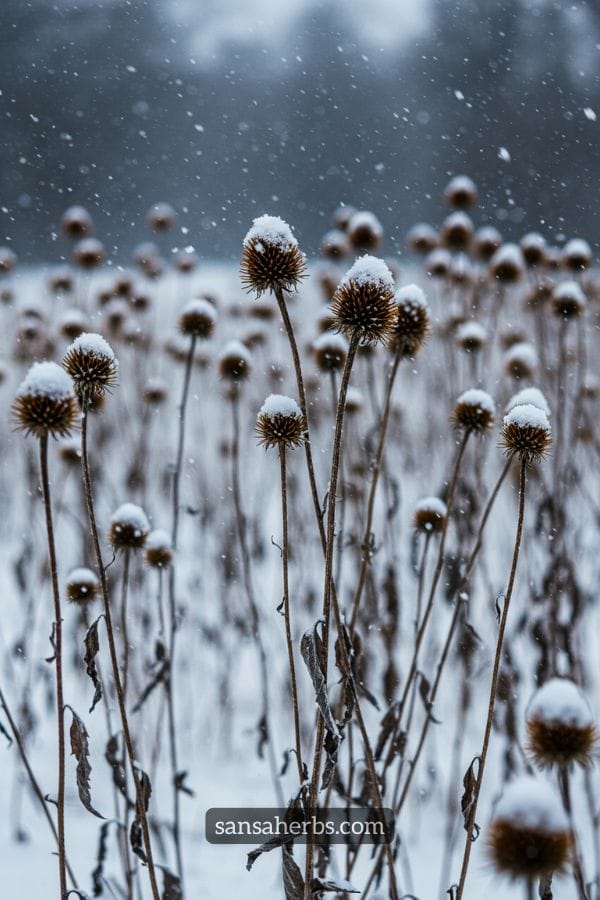Common echinacea growing mistakes for beginners often lead to weak blooms, root rot, or failure to return in the spring. While this beautiful herb is hardy and resilient, it has specific needs regarding drainage and root care.
This guide will help you identify the top echinacea growing mistakes for beginners, prevent transplant shock, and ensure your plants thrive to deliver their potent immune-supporting benefits.
Why Did My Echinacea Die? Common Beginner Errors
If your echinacea looks weak, sparse, or fails to come back, the issue is almost always related to water and drainage. Avoiding these specific echinacea growing mistakes for beginners is the secret to getting a thriving, potent herb garden.
Mistake 1: Poor Drainage (The Silent Killer)

The Problem: Planting echinacea in heavy clay or soggy soil. Why it Matters: Echinacea is a prairie native that develops deep taproots that hate wet feet. Without proper drainage, roots rot quickly. According to the Clemson Cooperative Extension, proper soil drainage is the most critical factor for preventing root rot in coneflowers.
Use loamy or sandy soil mixed with gravel or perlite. If you are mixing your own soil or growing in containers, it is critical to get the balance right. Learn how to create the perfect mix in our guide: The Ultimate Guide to Potting Soil: Crafting the Perfect Home for Your Plants.
Mistake 2: Overwatering (Loving It to Death)
The Problem: Watering echinacea daily like a vegetable plant. Why it Matters: Echinacea is drought-tolerant once established. Too much water weakens roots and attracts pests like aphids and fungus gnats. The Fix: Water only when the top 2 inches of soil are completely dry. Use a layer of mulch to retain moisture without encouraging constant dampness.
Mistake 3: The “Wrong Soil” Trap (Fungus Gnats)

The Problem: Using rich compost indoors without precautions. Why it Matters: Compost-rich soil is great for food, but often carries fungus gnat larvae. These pests can attack young echinacea roots. The Fix: If using compost-based soil indoors, place yellow sticky traps immediately to catch adults. Alternatively, use a sterile seed-starting mix and feed with liquid fertilizer once true leaves appear.
How to Transplant Echinacea Seedlings (Avoiding Shock)

Indoor-grown seedlings are tender. Rushing them outdoors without preparation causes transplant shock, resulting in drooping and stalled growth.
1. Hardening Off: The Vital Step
Never move a plant straight from a warm house to a cold garden.
- The Process: Over 7–10 days, gradually introduce seedlings to the outdoors. Start with 2–3 hours in dappled shade, increasing sun and wind exposure daily.
2. The “Leaf Lift” Technique
Echinacea stems are fragile lifelines. Never pick up a seedling by its stem.
- Pro Tip: Always lift the seedling by a leaf. If a leaf tears, the plant can grow a new one. If the stem snaps, the plant is dead.
3. Preventing Root Spin (Air Pruning)
In standard plastic pots, roots hit the wall and start circling, creating a weak “root-bound” plant.
- The Fix: If possible, use trays with air slits (like Winstrip trays). When roots hit the air, they stop growing outward and branch inward, creating a dense, healthy root ball that transplants easily.
Need Seeds? The easiest way to start with reliable seeds and guidance is through the Medicinal Garden Kit which includes Echinacea purpurea, the best variety for beginners.
How to Overwinter Echinacea in Cold Climates
Properly winterizing echinacea plants is essential for their survival and is the key to maximizing their medicinal potency.
When to Cut Back Echinacea for Winter or Leave Seed Heads?

We recommend leaving the stems standing through winter (and cutting them back in early spring).
- Insulation: The dried stalks create a natural cone of insulation over the root crown, protecting the plant from the harshest cold and the damaging effects of frost heave (where freezing soil pushes roots out of the ground).
- Wildlife: The dried seed heads are a valuable food source for birds, like goldfinches.
- Exception: If your plant suffered from fungal disease (like Powdery Mildew), cut it to the ground immediately in fall and discard the debris (do not compost!).
The 3-Inch Rule: Mulching for Protection
Mulching is the single most important step for protecting the roots.
- Wait for the Freeze: Apply a 3-inch layer of organic mulch (shredded leaves or straw) only after the ground has frozen. Applying it too early can trap moisture and attract rodents.
- Protect the Crown: Keep the mulch a few inches away from the plant stem to prevent rot.
- Containers: Potted echinacea needs special care. Group pots together in a sheltered area and wrap them with burlap or bubble wrap for insulation.
Maximizing Medicinal Potency Through Cold
Successfully winterizing isn’t just about survival, it makes your medicine stronger. Studies show that plants grown in colder climates accumulate higher amounts of immune-supporting compounds like alkylamides. By protecting the plant through winter, you encourage it to concentrate medicine in its roots.
FAQ
Yellow leaves often indicate poor drainage or overwatering. Check your soil moisture immediately. If the soil is soggy, let it dry out completely. If planted in heavy clay, you may need to amend the soil or transplant to a raised bed.
For beginners, cultivated Echinacea purpurea is the best choice. It is reliable, potent, and doesn’t require the difficult growing conditions of wild E. angustifolia.
Transplant in early to mid-spring, after the last frost, when seedlings have at least 2–3 sets of true leaves and soil temperatures are consistently above 55°F.
Once you’ve grown them successfully, learn how to turn them into powerful remedies! Check out our guide: Echinacea DIY Remedies for Beginners.